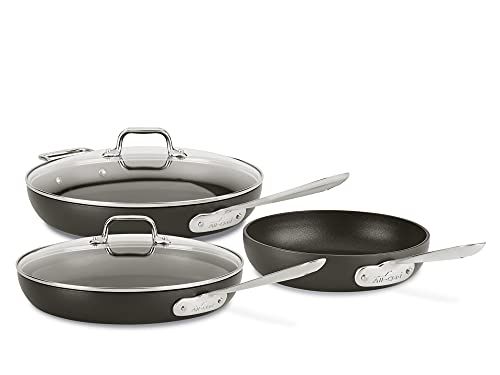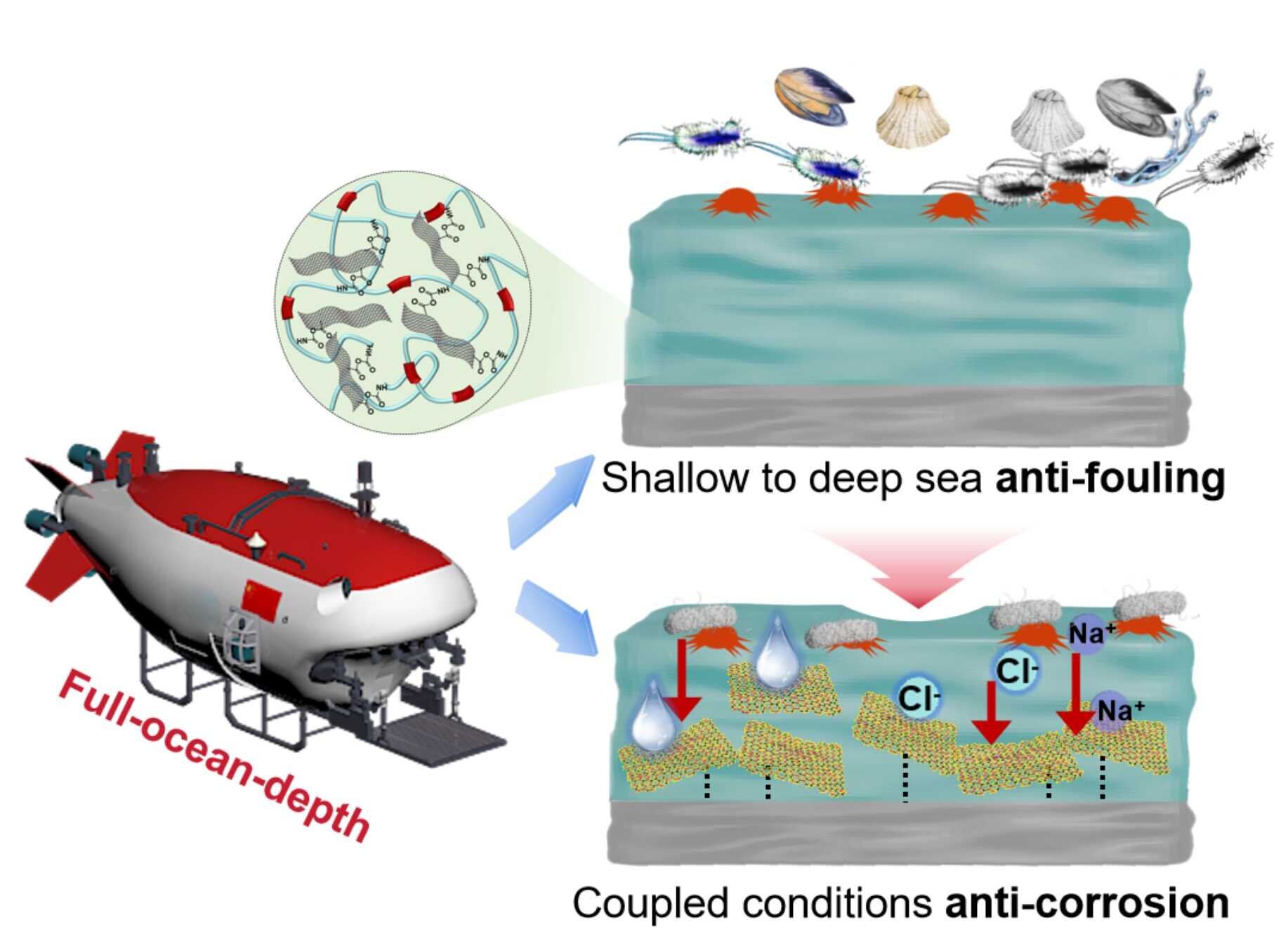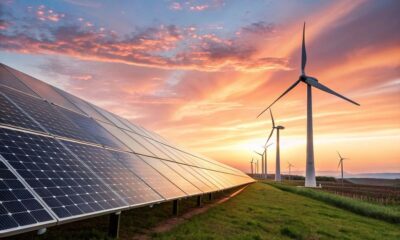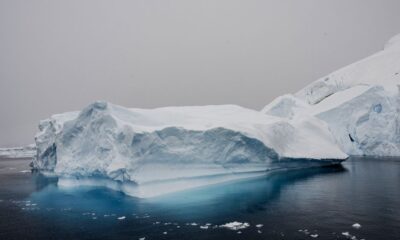Tech
Rainfall Buries a Mega-Airport in Mexico

The story of the park begins in 2014, when Enrique Peña Nieto, the president of Mexico at the time, announced plans for a new transport hub for Mexico City. It would be built on the largely dry bed of Lake Texcoco, the body of water that had once surrounded Mexico City’s ancient ancestor, Tenochtitlán, the center of the Aztec empire. The marketing promise was that NAICM would be one of the greenest airports in the world. The terminal, designed by Norman Foster—winner of the Pritzker Prize in 1999 and the Prince of Asturias Award for the Arts in 2009—was going to be the first to obtain LEED platinum certification, the highest international recognition for energy efficiency and sustainable design.
Its site, Lake Texcoco, had already lost more than 95 percent of its original surface area, and in 2015 plans were made to drain it completely to build the airport. However, when Andrés Manuel López Obrador took office as Mexico’s president in 2018, he canceled the plan. It would end up costing more than $13 billion and would leave behind serious environmental damage: The incomplete project destroyed a key refuge for migratory birds; carved up mountains in the State of Mexico (the federal region that surrounds Mexico City); razed agricultural land; and altered the landscape of the cultural capital of the Nahua, an indigenous people that includes the Mexica (or Aztecs).
Echeverría, who says he has been obsessed with the area for nearly three decades, was appointed by the new government to restore the local ecosystem. “It felt like I was stepping onto Mars,” says the architect, reflecting on being placed at the helm of the project. The park covers an area equivalent to 21 times the area of Mexico City’s enormous Bosque de Chapultepec park. Echeverría offers his own comparisons: “This place is three times the size of the city of Oaxaca and, as a reference for those outside Mexico, it’s roughly three times the size of Manhattan.”
The restoration project wasn’t a mere whim of Mexico’s new president, but the culmination of a century of visions and plans. “We’ve been skating around this for 75 years,” Echeverría says, citing restoration projects that were proposed as early as 1913, including ones by Miguel Ángel de Quevedo (a celebrated early environmentalist) in the 1930s and agronomist Gonzalo Blanco Macías in the 1950s. What was missing, Echeverría says, “wasn’t a lack of ideas, but of political will.”
Tech
Still Cooking on Scratched Nonstick? Check This All-Clad Deal Out

It can be hard to build an Adulting Arsenal. And expensive! Mattresses, couches, vacuums, cookware … all of these necessary things around us that require a hefty initial investment, lest you be met with back problems, sagging cushions, subpar suction, or flaking nonstick pans that leave a little bit of mystery plastic behind with every bite.
No more! It’s time to upgrade. Pick up this All-Clad 5-Piece Nonstick Frying Pan Set for $180 (a $30 discount) and throw your dingy, dented, second-or-possibly-thirdhand nonstick pans away. A better world is possible, and it starts with good tools.
And All-Clad is good tools. We’ve long heralded it as the gold standard, as have chefs around the world in kitchens big and small. It lasts for years. It’s backed by a limited lifetime warranty. It’s solid, it’s durable, it’s reliable, and it does what it’s supposed to do without causing more fuss than it’s worth.
This deal gets you three nonstick, hard-anodized frying pans in 8-inch, 10-inch, and 12-inch sizes, plus two lids for the bigger pans.
These are hard anodized, meaning the aluminum they’re constructed with is treated to be extra durable. And they’re coated in a PTFE nonstick (aka Teflon). There are many nonstick pans that don’t use PTFE anymore—we’re working on a roundup of our favorites—but generally, PTFE-coated cookware is still considered safe so long as you take good care of it and don’t overheat it. Make sure to use nonstick-safe utensils, use a lower degree of heat rather than higher when you can, don’t preheat an empty pan, and hand-wash them when you’re done, and they’ll serve you just fine.
Note that these All-Clad pans are marketed to be safe to 500 degrees Fahrenheit (though the lids are limited to 350 degrees). That’s the upper limit of “safe” when it comes to cooking on PTFE. We recommend sticking with this for your basic eggs, pancakes, and grilled cheeses, and maybe reaching for something different if you need to finish or bake a dish in the oven. Do what you’re comfortable with!
These pans are compatible with gas, electric, and induction cooking methods, and have a warp-resistant base. The stainless steel handles may have a different design than you’re used to, but I personally really like them—I can flip my eggs without a spatula thanks to the upward-jutting angle of the handles. And they’re technically dishwasher safe, though we recommend hand-washing gently to preserve that slick outer coating. The walls of the pan are nice and high, which gives you good leverage when flipping with a spatula. They’re also really stable and have a nice weight to them—they don’t feel cheap or flimsy, unlike some of the random nonstick pans I’ve used over the years.
If you need to upgrade your nonstick, it’s hard to beat this set, especially at this price. Make sure to check our separate stories on the All-Clad Factory Seconds Sale as well as this killer All-Clad Pizza Oven deal.
Tech
Deep-sea coating offers antifouling and anticorrosion protection in extreme environments

A research team from the Ningbo Institute of Materials Technology and Engineering (NIMTE) of the Chinese Academy of Sciences (CAS), has developed a new integrated poly(oxime-urethane) (PUDF) coating tailored for full-ocean-depth use. The material delivers antifouling and anticorrosion performance for marine engineering applications. The study was recently published in ACS Nano.
The deep sea has emerged as a frontier for marine exploration, but as marine engineering operations expand to full-ocean depths, equipment faces challenges: intense hydrostatic pressure, high salinity, and microbial communities that trigger simultaneous fouling and corrosion—threats that undermine long-term durability.
Conventional multilayer protective systems, however, are vulnerable to interfacial delamination and functional degradation, making them ill-suited for such harsh conditions. This gap has made the development of a single coating that combines synergistic antifouling and anticorrosion protection a critical, long-standing challenge.
To address this, the researchers employed precise molecular design and nanoscale interfacial engineering to create an integrated antifouling and anticorrosion coating based on PUDF. The novel material integrates antibacterial molecules (DFFD) with graphene oxide (GO-COOH) nanosheets, forming a dual-protection system.
The coating exerts its intrinsic antibacterial and antifouling effects by disrupting bacterial purine metabolism and suppressing nucleotide biosynthesis, while the graphene oxide layer provides a physical barrier, blocking corrosive ions and metabolites. This design provides both antifouling and anticorrosion capabilities, even in extreme deep-sea environments.
Experimental results validated the coating’s full-ocean-depth efficacy: Over two months, it prevented the attachment of macrofoulers in the East China Sea (at a depth of 2 meters) and microbial communities in the Philippine Sea (at 7,730 meters). Additionally, the coating withstood prolonged immersion in a simulated environment with high pressure (15 MPa), high salinity, and high bacterial concentration, demonstrating strong anticorrosion performance.
This study provides insights into designing synergistic protection mechanisms for high-performance coatings in extreme environments.
More information:
Peng Zhang et al, Full-Ocean-Depth-Oriented Poly(oxime-urethane) Coating: Construction and Protective Mechanism for Integrated Antifouling and Anticorrosion, ACS Nano (2025). DOI: 10.1021/acsnano.5c09595
Citation:
Deep-sea coating offers antifouling and anticorrosion protection in extreme environments (2025, October 29)
retrieved 29 October 2025
from https://techxplore.com/news/2025-10-deep-sea-coating-antifouling-anticorrosion.html
This document is subject to copyright. Apart from any fair dealing for the purpose of private study or research, no
part may be reproduced without the written permission. The content is provided for information purposes only.
Tech
How to Keep Subways and Trains Cool in an Ever Hotter World

TfL, to its credit, has made many efforts over the years to try to deal with the problem of hot tunnels, including attaching cooling panels to tunnel walls. The panels, which circulate water to remove heat from the air, were deployed in a trial in 2022, though they are not currently in use. Paul argues that such a system could be prohibitively expensive.
Hassan Hemida at the University of Birmingham says Paul’s water-cooling technology is a “good idea,” though it remains to be seen how much heat it could really remove from a real-life, busy Tube station full of people.
Certain railways simply push the boundaries of our ability to cool things down, says Hemida. He gives the example of super-high-speed trains traveling at, say, 400 kilometers per hour. They force air out of their way at high velocities, meaning the air pressure surrounding heating, ventilation, and air-conditioning (HVAC) equipment on the roofs of those trains can drop significantly. “Then, you cannot suck air into the HVAC system,” he says. Ultimately, that could cause the air-conditioning unit to fail. “I have been contacted by colleagues from China, and they want to find a solution for this problem,” Hemida adds.
More and more train operators are adopting air-conditioning systems as standard, though. London’s still relatively new Elizabeth Line features air-conditioning, for example. And a spokesman for Škoda Transportation, which recently rolled out air-conditioned metro trains in the capital of Bulgaria, says: “Generally, every vehicle we produce now is equipped with AC.” Sharon Hedges, senior engagement manager at Transport Focus, an industry watchdog, adds: “As people think about procuring new rolling stock, these are the kind of things that need to be uppermost in minds now.”
Heat waves are one thing in Britain. What about the Egyptian desert? German tech company Siemens is supplying Egypt with a new set of high-speed trains that can travel at speeds of up to 230 kilometers per hour. The firm’s Velaro trains are used in many places around Europe, but for Egypt, Siemens has really put them through their paces. Last summer, the company took one of the trains to a test facility in Austria and exposed it to unpleasant conditions, including temperatures as high as 60 degrees Celsius and high winds. “We are achieving 26 degree inside temperature at the hottest outside conditions,” says Björn Buchholz, head of HVAC and door systems.
-

 Fashion1 week ago
Fashion1 week agoChinese woman charged over gold theft at Paris Natural History Museum
-

 Entertainment1 week ago
Entertainment1 week agoJohn Grisham unveils his first-ever mystery, “The Widow”
-

 Tech1 week ago
Tech1 week agoThis Smart Warming Mug Is Marked Down by $60
-

 Tech1 week ago
Tech1 week agoEaster Island’s Moai Statues May Have Walked to Where They Now Stand
-

 Fashion1 week ago
Fashion1 week agoThe North Face and Cecilie Bahnsen launch second collaboration
-

 Politics4 days ago
Politics4 days agoTrump slams ‘dirty’ Canada despite withdrawal of Reagan ad
-

 Fashion1 week ago
Fashion1 week agoNew EU strategy proposed to shape global clean, resilient transition
-

 Sports1 week ago
Sports1 week agoMaccabi Tel Aviv to decline tickets for European tie at Aston Villa | The Express Tribune


















